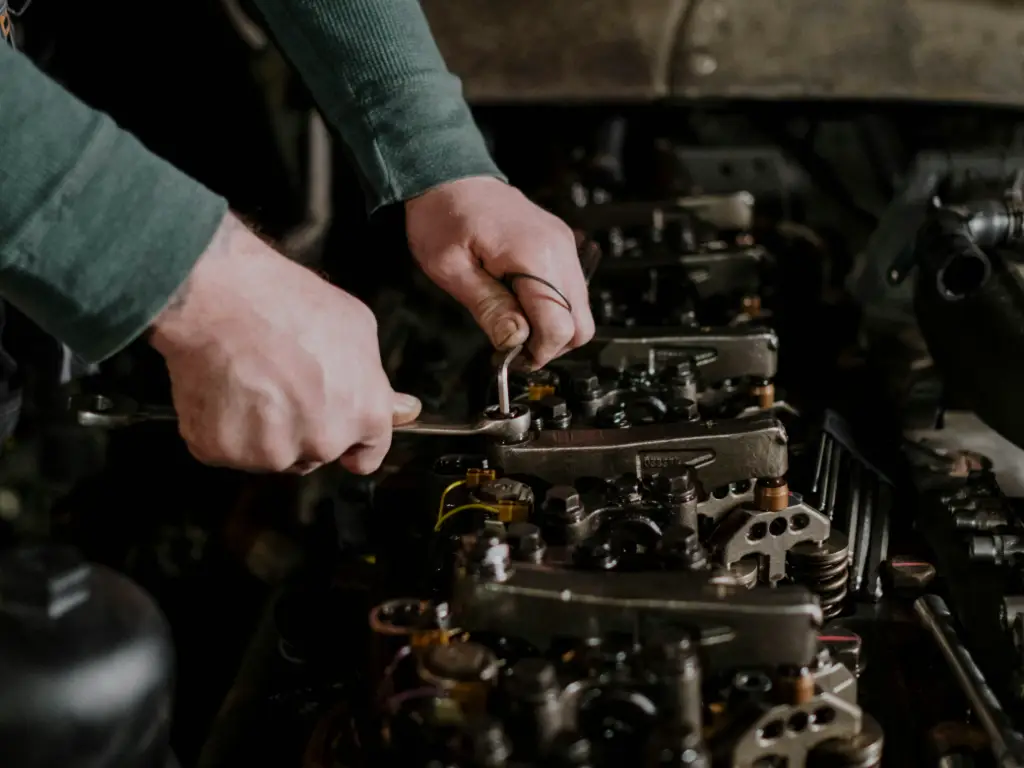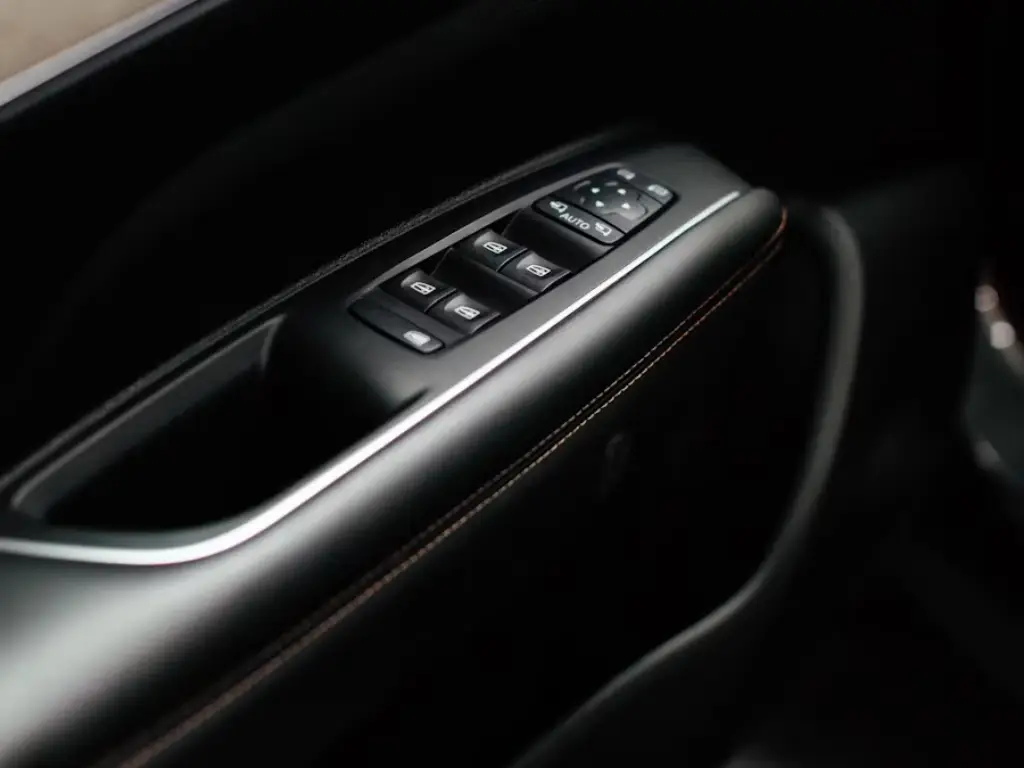وجدت نفسك على مفترق طرق, محاولة تحديد ما إذا كان يجب الذهاب لهذا الجزء الجديد اللامع أو التمسك بالموثوق القديم? عندما يتعلق الأمر بصيانة المركبات, يعد اختيار المكونات الصحيحة أمرًا بالغ الأهمية. أدخل قطع الغيار التلقائي OEM: المعيار الذهبي في عالم إصلاح السيارات. تصنع هذه الأجزاء من قبل الشركات المصنعة نفسها التي أنشأت المكونات الأصلية لسيارتك, يعد بالأداء المثالي والمتسق. في هذا الدليل, سنستكشف ما تدور حوله قطع غيار OEM Auto, مزاياها, وكيف تتكدس ضد خيارات ما بعد البيع.

ماذا يعني OEM في قطع الغيار?

يعتمد OEM على الشركة المصنعة للمعدات الأصلية, بالإشارة إلى الأجزاء التي تصنعها نفس الشركة التي أنتجت المكونات الأصلية لسيارتك. تم تصميم قطع الغيار التلقائية OEM لتكرار المواصفات الدقيقة, جودة, وأداء الأجزاء الأصلية المثبتة في سيارتك. تضمن هذه المكونات نوبة مثالية والحفاظ على سلامة أداء سيارتك وموثوقيتها.
في جوهر, قطع الغيار التلقائية OEM ضمان الاتساق والمتانة, نظرًا لأنها مبنية على نفس المعايير العالية مثل الأجزاء المستخدمة أصلاً في سيارتك. بينما تأتي بتكلفة أعلى مقارنة بخيارات ما بعد البيع, دقتهم, والتوافق يجعلهم خيارًا مفضلاً للعديد من مالكي السيارات الذين يبحثون عن بدائل يمكن الاعتماد عليها.
إيجابيات قطع غيار السيارات OEM
- جودة لا مثيل لها: تم تصنيع أجزاء OEM بنفس المعايير العالية مثل المكونات الأصلية. هذا يعني أنه يمكنك توقع أداء ثابت, متانة, والموثوقية.
- توافق مثالي: نظرًا لأن أجزاء OEM مصممة خصيصًا لصنع وطراز سيارتك, أنها تناسب تماما, تقليل فرص المشكلات التي قد تنشأ مع بدائل ما بعد البيع.
- ضمان الضمان: عادة ما تأتي أجزاء OEM مع ضمان من الشركة المصنعة, توفير حماية إضافية وراحة البال في حالة وجود عيوب أو إخفاقات مبكرة.
سلبيات قطع الغيار التلقائي OEM
- تكلفة أعلى: أحد العيوب الرئيسية لقطع غيار OEM هو ارتفاع سعرها مقارنة بخيارات ما بعد البيع. تعكس التكلفة المميزة ضمان العلامة التجارية للجودة والملاءمة الدقيقة.
- مجموعة متنوعة محدودة: تقتصر قطع غيار OEM على عروض الشركة المصنعة. هذا يعني أنه قد لا تتمكن من الوصول إلى أحدث التطورات التكنولوجية أو تحسينات الأداء المتوفرة في أجزاء ما بعد البيع.
- قضايا التوفر: أحيانا, يمكن أن يكون الحصول على أجزاء OEM أمرًا صعبًا, especially if the parts are discontinued or hard to find, leading to potential delays in repairs.
What Is OEM Equivalent Auto Parts? Is it the Same as the OEM Part?
OEM equivalent auto parts are components designed to match the specifications and performance of the original equipment manufacturer (تصنيع المعدات الأصلية) parts but are produced by third-party manufacturers rather than the original car manufacturer. These parts aim to offer similar functionality and fit as OEM parts, making them a popular alternative for vehicle repairs.
While OEM equivalents strive to replicate the quality and performance of OEM parts, there are notable differences:
- الشركة المصنعة: OEM parts are made by the original vehicle manufacturer or an authorized supplier, ensuring strict adherence to the original specifications. في المقابل, OEM equivalents are produced by independent companies, which may not always match the exact standards of the original parts.
- Quality Consistency: OEM parts come with a guarantee of consistent quality, as they are made to the exact same standards as the original components. OEM equivalents, while often designed to be similar, can vary in quality depending on the manufacturer, and may not always provide the same level of performance or durability.
- يكلف: عمومًا, OEM equivalents are more affordable than genuine OEM parts. This cost-saving aspect can be appealing, but it’s important to weigh it against the potential variations in quality and reliability.
How Do I Know If a Car Part Is OEM?
Determining whether a car part is an OEM component involves a few key steps to ensure you’re getting the genuine article:
- Check the Packaging: OEM parts typically come in packaging that features the manufacturer’s branding and logos. Look for distinctive markings or labels that indicate the part is from the original manufacturer. Authentic OEM packaging often includes detailed information such as part numbers and manufacturing details.
- Verify the Part Number: Each OEM part has a specific part number assigned by the manufacturer. You can cross-reference this number by consulting your vehicle’s owner’s manual or the manufacturer’s online database. Many manufacturers offer searchable online catalogs where you can input your vehicle’s make, نموذج, and year to find matching OEM part numbers.
- Consult Authorized Dealers: Certified dealerships and repair shops have direct access to manufacturer databases and can confirm whether a part is OEM. They can provide verification and may also offer the part directly, ensuring authenticity.
- Examine the Part Itself: Genuine OEM parts often have specific markings, logos, or serial numbers engraved on them. Compare these details with the manufacturer’s specifications to confirm authenticity.
- Request Documentation: When purchasing OEM parts, ask for documentation or a certificate of authenticity from the seller. Reputable suppliers should be able to provide proof that the part is genuinely OEM.
How Do I Find OEM Part Numbers?
Locating OEM part numbers is crucial for ensuring you purchase the correct replacement parts for your vehicle. Here are several methods to help you find these vital numbers:
- Owner’s Manual: The first place to check is your vehicle’s owner’s manual. غالباً, it includes a section with part numbers for common components, such as filters, belts, and bulbs. This can serve as a handy reference for basic parts.
- Manufacturer’s Website: Many car manufacturers provide online parts catalogs or databases. By entering your vehicle’s make, نموذج, والسنة, you can search for the part you need and retrieve its OEM number. Websites such as these often allow you to browse parts diagrams and identify the exact number for each component.
- Vehicle Identification Number (VIN): Your VIN can be used to look up specific parts for your vehicle. By inputting your VIN into a manufacturer’s parts database or an authorized dealer’s system, you can obtain precise OEM part numbers tailored to your vehicle’s specifications.
- Authorized Dealerships: Visiting or contacting a certified dealership can be an effective way to find OEM part numbers. Dealerships have access to comprehensive parts catalogs and can assist you in locating the correct part number based on your vehicle’s details.
- Parts Suppliers and Retailers: Many online auto parts retailers offer search functions where you can input your vehicle’s make, نموذج, and year to find OEM part numbers. Ensure that the retailer is reputable and provides accurate information to avoid any errors.
What Are the Differences Between OEM and Aftermarket Parts?

يتضمن الاختيار بين أجزاء OEM وأجزاء ما بعد البيع فهم الاختلافات الرئيسية التي يمكن أن تؤثر على أداء سيارتك وتجربة الإصلاح الشاملة الخاصة بك. إليكم انهيار الفروق الرئيسية:
الجودة والأداء
يتم تصنيع قطع غيار OEM من قبل الشركة المصنعة للمركبات الأصلية أو مورديها المعتمدين, ضمان تلبية نفس المواصفات ومعايير الجودة مثل المكونات الأصلية. هذا يضمن أن الأجزاء ستعمل باستمرار وموثوق. على سبيل المثال, إذا استبدلت لوحة الفرامل بجزء OEM, سيكون لها نفس قوة التوقف والمتانة حيث يتم تثبيت الوسادة الأصلية في سيارتك.
في المقابل, يتم إنتاج أجزاء ما بعد البيع من قبل شركات الطرف الثالث وقد لا تتطابق دائمًا مع جودة مكونات OEM. في حين أن بعض قطع غيار ما بعد البيع يمكن أن توفر أداءً محسّنًا أو ميزات إضافية, قد يفتقر الآخرون من حيث المتانة أو الفعالية.
يكلف
واحدة من أكثر الاختلافات ملحوظة بين أجزاء OEM وأجزاء ما بعد البيع هو التكلفة. تأتي قطع غيار OEM عمومًا بسعر أعلى بسبب رابطة العلامة التجارية والجودة المضمونة. على سبيل المثال, قد يكلف مرشح هواء OEM لـ Toyota Camry حوله $30, في حين يمكن تسعير مرشح ما بعد البيع إلى حد أدنى $15.
غالبًا ما تكون قطع غيار ما بعد البيع أكثر بأسعار معقولة ويمكن أن توفر وفورات كبيرة في التكاليف. لكن, يمكن أن يأتي هذا السعر المنخفض في بعض الأحيان مع مقايضات من حيث الجودة أو طول العمر. على سبيل المثال, في حين أن مولد ما بعد البيع قد يكون أرخص, يمكن أن يكون لها عمر أقصر مقارنة بإصدار OEM, يحتمل أن يؤدي إلى بدائل أكثر تكرارًا.
الضمان والتأكيد
عادة ما تأتي أجزاء OEM مع ضمان من الشركة المصنعة, التي يمكن أن تغطي العيوب أو المشكلات التي تنشأ بعد التثبيت. يوفر هذا الضمان راحة البال ويحمي استثمارك. على سبيل المثال, قد يأتي محول حفاز جديد OEM مع ضمان لمدة عامين أو 24000 ميل, التأكد من تغطيتك إذا فشلت قبل الأوان.
قد تتضمن أو لا تتضمن أجزاء ما بعد البيع ضمانًا, ويمكن أن تختلف التغطية بشكل كبير. بعض أجزاء ما بعد البيع تأتي مع ضمانات مماثلة لقطع غيار OEM, في حين أن الآخرين قد يقدمون ضمانًا محدودًا أو بدون ضمان على الإطلاق. على سبيل المثال, قد يأتي المبرد بعد البيع مع ضمان لمدة عام واحد, وهو أقل شمولاً من الضمان الذي توفره الشركة المصنعة الأصلية.
توافر وتنوع
تتوفر قطع غيار OEM عادة من خلال الوكلاء والمصنعين المعتمدين, والتي يمكن أن تحد في بعض الأحيان الخيارات. إذا كنت بحاجة إلى جزء محدد لسيارة نادرة أو أكبر, قد يكون من الصعب العثور على بديل OEM.
توفر أجزاء ما بعد البيع مجموعة واسعة من الخيارات والابتكارات, في بعض الأحيان بما في ذلك تحسينات الأداء أو الميزات الجديدة غير متوفرة مع قطع غيار OEM. على سبيل المثال, قد توفر مجموعات تعليق ما بعد البيع إعدادات قابلة للتعديل لتحسين المناولة, والتي يمكن أن تكون مفيدة لعشاق الذين يتطلعون إلى تخصيص أداء سيارتهم.
الملاءمة والتوافق
تم تصميم أجزاء OEM لتتناسب تمامًا مع مواصفات سيارتك, ضمان تركيب ووظيفة سلسة. منذ أن صنعت من قبل الشركة المصنعة الأصلية, يتم اختبارهم للتوافق مع أنظمة سيارتك.
أجزاء ما بعد البيع, بينما يتم تصميمها غالبًا لتكون متوافقة مع مجموعة واسعة من المركبات, قد لا تتناسب دائمًا على وجه التحديد مثل أجزاء OEM. قد يؤدي ذلك في بعض الأحيان إلى قضايا مثل الاختلال أو الحاجة إلى التعديلات. على سبيل المثال, قد يتطلب حاجز ما بعد البيع تعديلات لتناسب بشكل صحيح, والتي يمكن أن تعقد عملية التثبيت وربما تؤثر على مظهر أو وظيفة السيارة.
أين هو أفضل مكان لشراء قطع غيار سيارة OEM?

يعد إيجاد مصادر موثوقة لقطع غيار السيارات OEM ضروريًا لضمان تلقي جودة عالية, مكونات حقيقية لسيارتك. فيما يلي بعض الأماكن الجيدة لشراء قطع غيار OEM:
Manufacturer’s Website
العديد من الشركات المصنعة للسيارات لديها متاجر قطع الغيار الخاصة بهم أو كتالوجاتها. مثل مواقع الويب https://cowtotal.com/ اسمح لك بالبحث عن أجزاء OEM مباشرة من الشركة المصنعة. توفر مواقع الويب هذه قوائم وأسعار قطع غيار محدثة, التأكد من حصولك على المعلومات الأكثر دقة وحالية. بالإضافة إلى ذلك, يمكن أن تقدم الطلب مباشرة من موقع الشركة المصنعة راحة البال حول صحة الأجزاء.
Authorized Dealerships
الوكلاء المعتمدين هي واحدة من أكثر المصادر موثوقية لقطع غيار سيارة OEM. يحصلون على مخزونهم مباشرة من الشركة المصنعة للمركبة, ضمان الأصالة والجودة. تقدم الوكلاء أيضًا موظفين دراية يمكنهم مساعدتك في العثور على الجزء الدقيق الذي تحتاجه وتقديم نصيحة للتثبيت قيمة. على سبيل المثال, إن شراء جزء من OEM مثل ناقل حركة من أجل هوندا أكورد من وكالة هوندا يضمن أن الجزء حقيقي ومتوافق مع سيارتك.
تجار التجزئة المعتمدين على الإنترنت
يتخصص تجار التجزئة المعتمدين عبر الإنترنت في قطع غيار OEM ويمكنهم تقديم تجربة تسوق مريحة. Websites like COWTOTAL provide comprehensive catalogs where you can search for parts based on your vehicle’s make, نموذج, والسنة. These retailers often have competitive pricing and detailed product descriptions to ensure you are buying the correct part.
Specialty Auto Parts Stores
Some auto parts stores focus specifically on OEM parts and offer personalized service to help you find what you need. Stores such as COWTOTAL and NAPA Auto Parts often carry a range of OEM components and can assist you in locating specific parts. These stores also provide the advantage of immediate availability, allowing you to pick up parts in person and get expert advice from staff.
Vehicle Repair Shops
Certified repair shops and mechanics often have access to OEM parts through their supplier networks. Many repair shops partner with manufacturers or authorized distributors to obtain genuine parts for their customers. If you have a trusted repair shop, they can order the correct OEM parts for you and handle the installation, saving you time and effort.
How to Find a Reliable OEM Auto Parts Company?

Finding trustworthy tier 1 OEM auto parts suppliers is crucial for ensuring you receive authentic, high-quality components for your vehicle. Here are some key steps to help you identify a reliable supplier:
Check Reviews and Ratings
Start by looking at customer reviews and ratings for potential OEM auto parts companies. Websites like Trustpilot, Google Reviews, and Yelp can provide insights into the experiences of other customers. Pay attention to feedback regarding product quality, خدمة العملاء, and delivery times. A company with consistently positive reviews and high ratings is more likely to be reliable.
Verify Certification and Authorization
Ensure that the company is certified or authorized by the vehicle manufacturer to sell OEM parts. Authorized dealers and suppliers have a direct relationship with the manufacturer and adhere to specific standards for selling genuine parts. You can often find this information on the company’s website or by contacting their customer service. على سبيل المثال, a company listed as an authorized dealer on the manufacturer’s official website is a credible source for OEM parts.
Compare Prices and Offerings
While price shouldn’t be the sole factor, comparing prices among different OEM auto parts suppliers can help you find a fair deal. Look for companies that offer transparent pricing and detailed product descriptions. Be cautious of prices that are significantly lower than those of other suppliers, as they may indicate counterfeit or substandard parts.
Evaluate Customer Service
Good customer service is essential when dealing with OEM auto parts. Evaluate how responsive and helpful the company’s customer service team is by reaching out with questions or concerns. A reliable company should provide clear answers and assist with any issues related to parts authenticity, returns, or warranties. Test their responsiveness through email or phone inquiries before making a purchase.
Review Return and Warranty Policies
Check the company’s return and warranty policies to ensure they offer adequate protection for your purchase. A reputable OEM auto parts supplier should have a clear and fair return policy, as well as warranty coverage for the parts they sell. This ensures that you have recourse if the parts are defective or do not meet your expectations.
خاتمة
As you navigate the world of vehicle repairs, considering OEM auto spare parts can be a smart move for ensuring reliability and quality. While they might come with a higher price tag, the assurance of a perfect fit and long-term performance often justifies the cost. Whether you’re looking to maintain your car’s integrity or simply want peace of mind, understanding the role of OEM parts can help you make informed decisions. Choose wisely, and you’ll keep your vehicle running smoothly for years to come.
التعليمات
س1: Is it OK to use non-OEM Car parts?
Using non-OEM car parts, or aftermarket parts, is generally acceptable, but it’s important to ensure they meet quality standards. Aftermarket parts can offer cost savings and sometimes enhanced performance but may not always match the reliability or fit of OEM parts.
Q2: What is better than OEM?
“Better” can be subjective. Aftermarket parts may offer improvements or features not available in OEM parts, such as enhanced performance or additional features. لكن, OEM parts provide guaranteed compatibility and quality, making them a reliable choice for many vehicle owners.
س3: Is OEM high quality?
نعم, OEM parts are typically high quality as they are made by the same manufacturer that produced the original components for your vehicle. They are designed to meet precise specifications, ensuring optimal performance and durability.

























